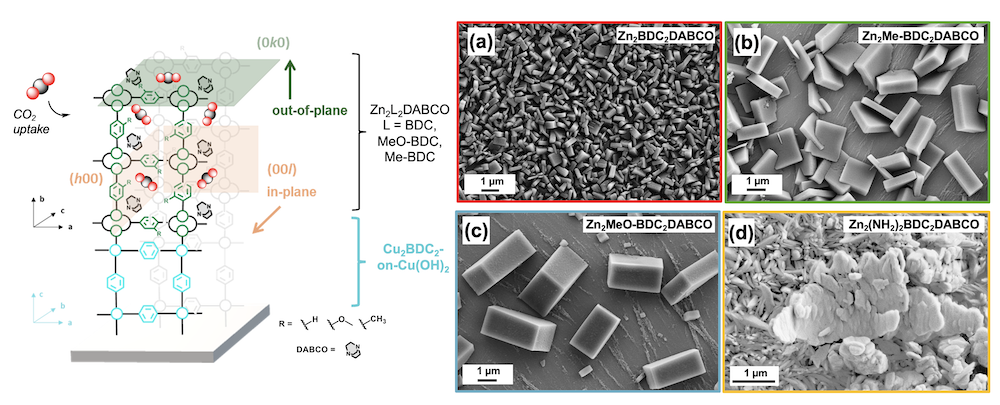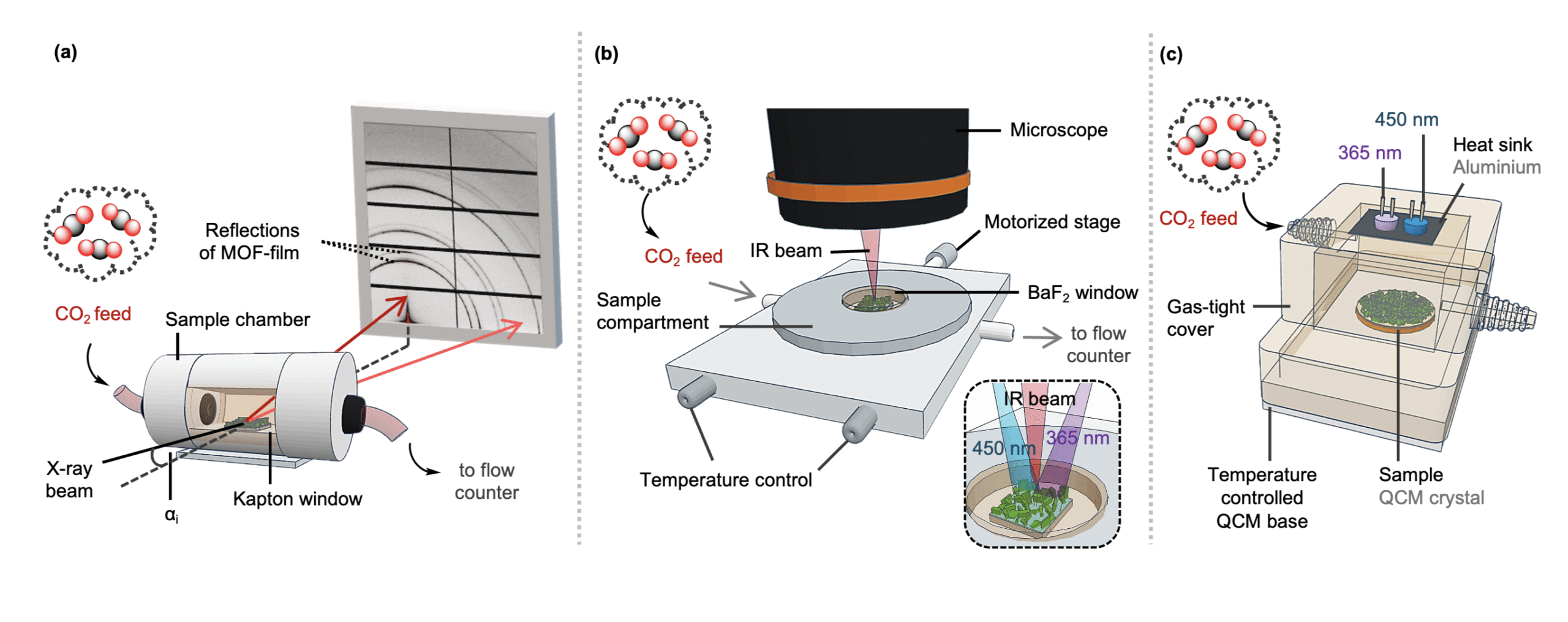PRESS RELEASE – Light-responsive MOF films offer scalable solution for carbon capture and storage
|Trieste, 06 August 2025 — Exploiting a multi-technique approach, scientists have taken a significant step toward developing scalable, low-energy solutions for carbon capture and storage using metal-organic framework (MOF) films that can reversibly adsorb and release carbon dioxide under mild conditions—triggered only by changes of light and temperature. This could represent a key point to meet carbon neutrality goals.
The study, conducted by an interdisciplinary team that included scientists from the research infrastructure consortium CERIC-ERIC, Elettra Sincrotrone Trieste, Graz University of Technology (TU Graz) and the Istituto Officina dei Materiali (IOM) of the National Research Council of Italy (IOM-CNR), has been recently published in Nature Communications. In their research, supported by CERIC-ERIC, scientists addressed a critical challenge in the field: adapting highly porous MOF materials into practical, durable, and responsive assemblies for the use in carbon capture and storage technologies, while maintaining their structural integrity and sorption capacity.
Carbon neutrality goals aim to mitigate human impact on climate change achieving a balance between carbon dioxide (CO2) emissions and its adsorption or sequestration from the atmosphere. Within this context, MOFs, known for their exceptional porosity and tunable chemistry, are among the most promising candidates for future CO₂ mitigation strategies. However, their integration and use have been slowed down by difficulties in fabricating functional, stable forms—especially films or membranes—compatible with industrial systems. In this new study, researchers engineered flexible Zn-based MOF films grown as heteroepitaxial layered structures on substrates. These films incorporate functionalized organic linkers, including photo-switchable molecules like azobenzene, enabling reversible CO₂ capture triggered by light (both ultraviolet and visible).

heteroepitaxial growth of the Zn2L2DABCO structures. Two planes align in-plane (orange highlighted areas), whilst another one
(green highlighted area) orients in the out-of-plane direction being parallel to the substrate. SEM micrographs of the
functionalized structures are shown for (a) Zn2BDC2DABCO, (b) Zn2Me-BDC2DABCO, (c) Zn2MeO-BDC2DABCO and (d)
Zn2(NH2)2-BDC2DABCO [adapted from Klokic et al., Flexible metal-organic framework films for reversible low-pressure carbon
capture and release, Nature Communications (2025)]

The full paper, Flexible metal-organic framework films for reversible low-pressure carbon capture and release, is available in Nature Communications at the following link: https://doi.org/10.1038/s41467-025-60027-6
—
CERIC-ERIC is a European research infrastructure consortium established by the European Commission and the Government of eight Countries in 2014. It offers researchers and industry access to more than 60 experimental analytical and synthesis techniques in advanced research facilities in eight Central and Eastern European countries, and associated institutions. This supports multidisciplinary research down to the micro- and nano-level in the fields of advanced materials, biomaterials and nanotechnology. In CERIC’s facilities, materials can be analysed and their structure investigated by combining techniques based on the use of electrons, ions, neutrons and photons.
Access to CERIC’s research services is through international calls for proposals that allow free access to multiple techniques and reward the best projects, provided their results are open and published. In addition, there is commercial access for proprietary research open to companies, and support for technology transfer.
CONTACTS: CERIC Press Office: press@ceric-eric.eu
Marcello Turconi (Science Communication Officer): marcello.turconi@ceric-eric.eu



